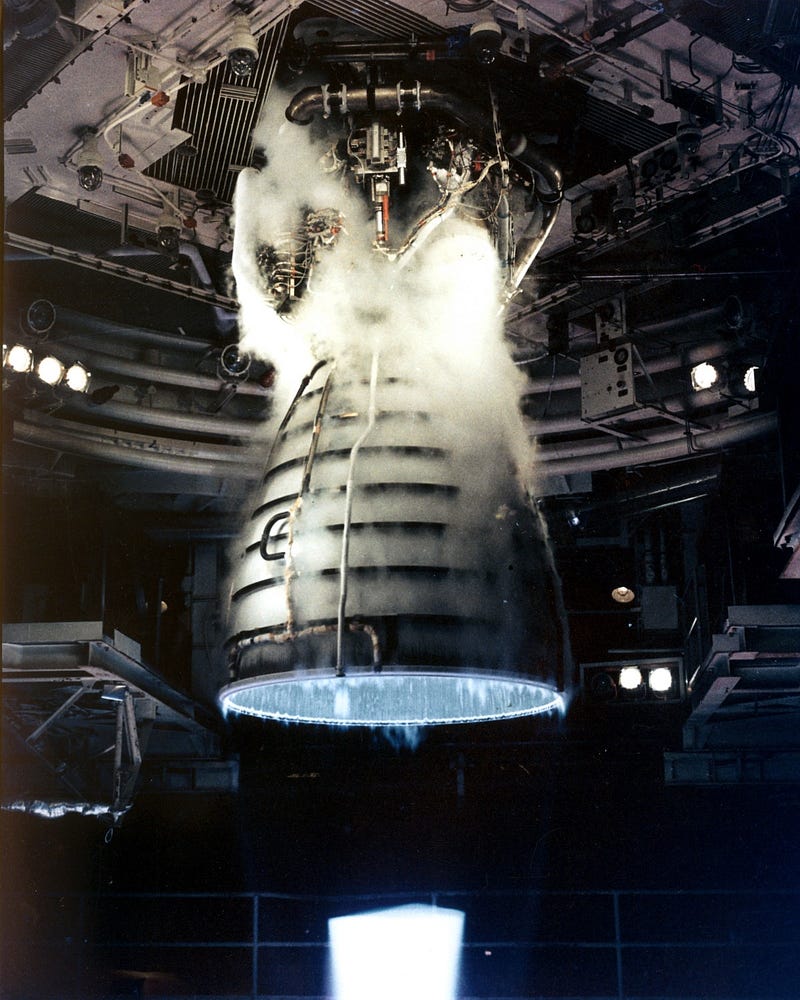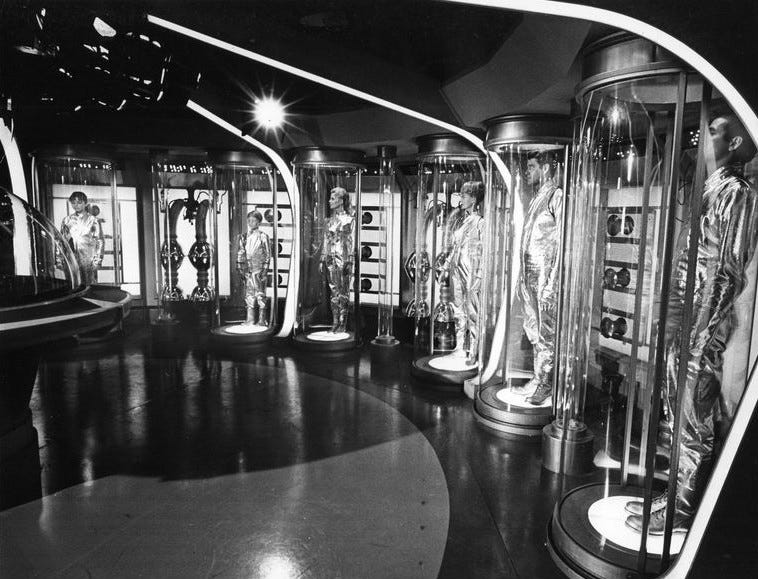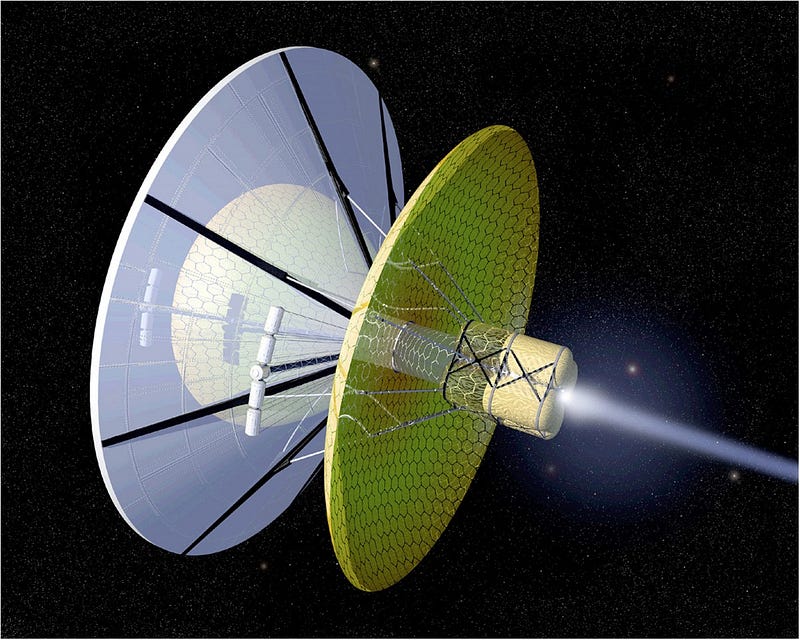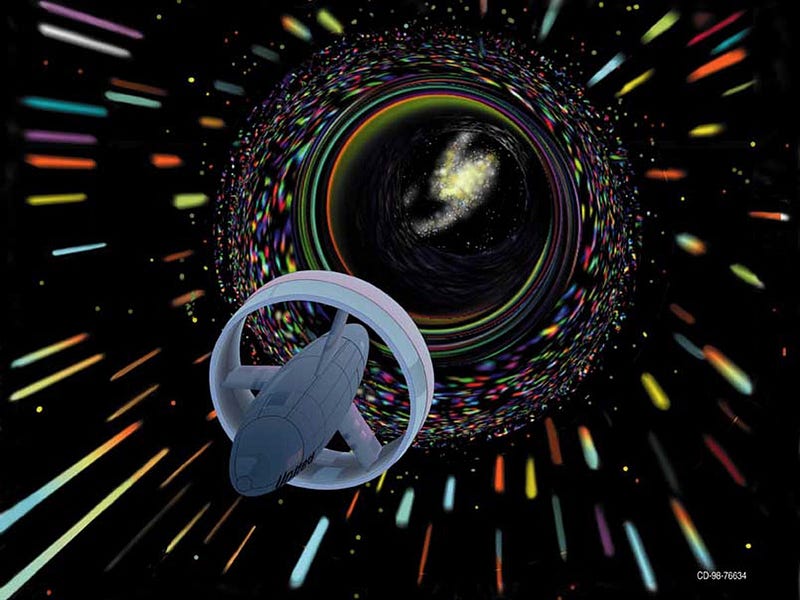Ask Ethan: Is Interstellar Travel Possible?

With current technology, things might take generations. But that could be greatly reduced with a little help.
“Oh, yes — I know you. There was a time you looked at the stars and dreamed of what might be.” –Star Trek: Nemesis, spoken by Jean-Luc Picard
For generations, when we looked out at the distant stars, we could only wonder whether there were planets and the conditions for life-as-we-know-it around them. The past 25 years have brought forth a revolution in planet-finding, with thousands of known, confirmed planets, including many of potentially habitable, Earth-like worlds. But could we ever get there? Reader C. Vidal wants to know:
Do you think interstellar travel is possible (by any civilization). It seems to me that all possible solutions are one way trips.
When it comes to interstellar travel, I definitely do think it’s possible. But there definitely are constraints, dependent on how we’re willing to do it.

1.) Conventional Technology. If all we’re willing to use is the technology we have today, we could, theoretically, reach another star. By building a large enough ship that we could have a sustainable mini-civilization — a “generations ship” of sorts — we could boost up to speeds of tens or maybe even hundreds of km/s, growing our own food and recycling our water along the way. An alternative would be to develop cryogenic freezing-and-thawing technology, where humans, plants and other living creatures could be transported in suspended animation (a la Thundercats), only to be reanimated and revived upon arrival.

Some “standard” concerns, like collisions with interplanetary/interstellar objects, like rogue asteroids or planets, are actually not particular causes for concern. These objects — although plentiful — are so low in density that strikeseven between stars are extraordinarily unlikely, even on million-year timescales. A trip like this would take hundreds of thousands of years to reach the nearest star system, and seems to be within reach.
But this is the ultimate one-way trip, and not at all a satisfying solution.

2.) Future Technology based on known Physics. But if we’re willing to consider other technological possibilities, we can certainly do better. In particular:
- Fuel improvements: rather than using chemical-based rocket fuel, which releases about 0.001% of its mass into energy which can be used for thrust, we can use nuclear-based fuel (which is about ~1% efficient), or even antimatter-based fuel, which would be 100% efficient.
- Thrust improvements: if we can transport large amounts of matter-and-antimatter for fuel on board a ship, we can continue to accelerate along our journey. Since humans can withstand (and even prefer) thrusts that are similar to Earth’s gravity, we could point our ship towards our destination, fire the thrusters at 9.8 m/s2, and when we reach the halfway point, point the opposite direction and fire again, decelerating until we reach our destination.
- Time improvements: because this will bring us close to the speed of light after only a few years of acceleration, we could get to pretty much any star we choose in no more than 20–40 years of travel.
This would be great, because we wouldn’t need a ship to last for generations. Sure, it’d have to survive traveling at very high speeds through the interstellar medium, but a strong enough magnetic field (and a map of neutral gas clouds to avoid) should take care of that. And if we can master the cryo-freeze technology, we wouldn’t even need to bring resources other than seeds to plant and eggs to incubate upon our arrival.

The downside, though, is that a one-way journey might only take a few decades from the perspective of the person on the journey, but that’s due to special relativistic time dilation. If we’re visiting a star hundreds or thousands of light years away, then hundreds or thousands of years pass here on Earth. Even if we make this journey, our prospects of communication with anyone still on Earth (assuming there is still anyone here on Earth that far in the future) will have to be with their distant descendants. The journey need not be one-way for the people who go, but for the people left behind, there’s no chance to find out how it turned out, or to share knowledge with these now-distant travelers.
But what if we wanted the ultimate in extending humanity’s reach: a Star Trek-like experience?

3.) Speculative Technology. Could we build a transporter? Is warp drive possible? What about sub-space communication? These are all “dream technologies” at this point, that might be based in modern theoretical physics, but whose possibility for our Universe are as yet undetermined.
Transporter technology, in theory could use the property of quantum entanglement to move any quantum system instantaneously from one location to another, so long as the system’s wavefunction had a finite probability of being at either location. But whether it’s possible to make a macroscopic system have this property over a sizable distance is not yet known.

Warp drive and instantaneous communication both rely on the warping of spacetime and the ability to send a signal (in the case of communication) or matter (in the case of warp drive) through this warped space stably and without being destroyed. In principle, it may be possible to construct a solution in General Relativity where this occurs. However, what’s again not clear is whether one can achieve this in our Universe without having any or all of the following occur:
- Requiring something like the amount of energy stored in the entire Sun,
- Destroying through colossal tidal forces any matter you’d attempt to send through the warped space,
- Destroying any matter by creating and then un-creating the severely warped space,
- Or whether it’s even possible to join two distinctly separated locations in spacetime.

At this point, although I hate to say it, our best bet is to focus on the one-way journey; for going at all is better than waiting for a technology that may be physically impossible in our Universe to arrive. Yet keep your mind open, because the very developments that may seem unfathomable today may be the ones that lead us to our interstellar dreams. Demand physical rigor and be skeptical of extraordinary claims, but leave yourself open to the possibilities. Our greatest voyage into the Universe is surely yet to come.
Submit your questions and suggestions for the next Ask Ethan here.
Leave your comments on our forum, and check out our first book: Beyond The Galaxy, available now, as well as our reward-rich Patreon campaign!





